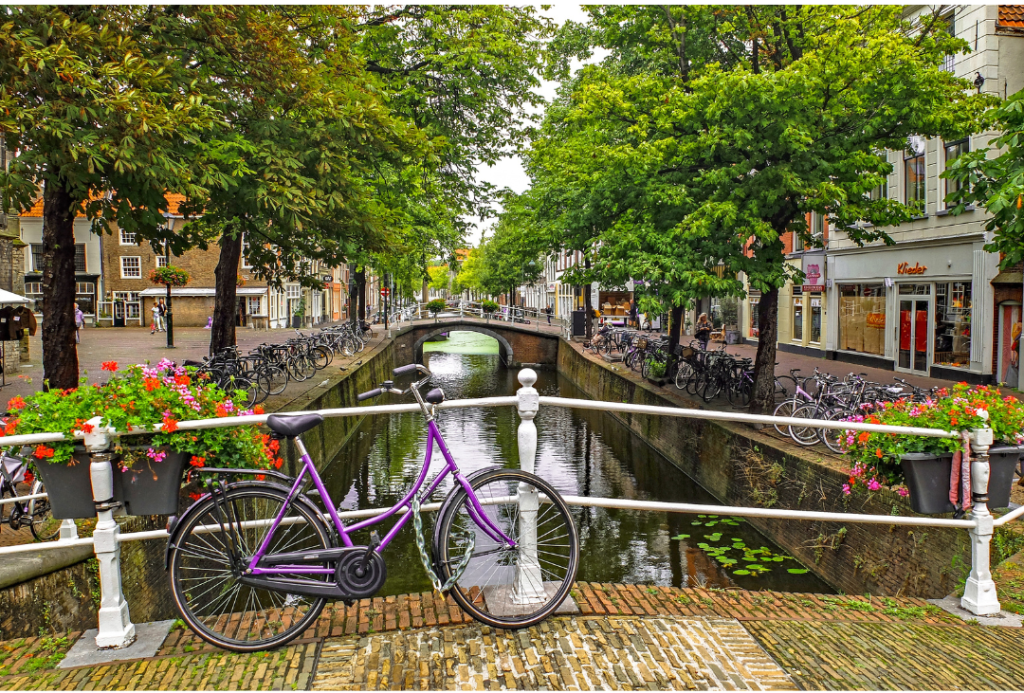Cyclists in the Netherlands
The Dutch terrain and moderate climate combined with a superbly developed infrastructure make the bicycle an excellent means of transport. This small country has 35 000 km of dedicated cycle paths and over 22.8 million bicycles per 17 million inhabitants (in Amsterdam alone there are 881 000). According to research, as many as 27% of all journeys are made using this mode of transport. This rate is even higher in Amsterdam (38%) and Groningen (59%). The average inhabitant of the Netherlands covers about 900 km per year by bicycle. In large cities, getting around on a bike is much easier and faster than getting around by car. The Dutch mostly use bicycles to commute to work or school, although leisure rides are also very popular. Bicycles are a tempting target for thieves, so it is essential to use security devices (preferably two different fasteners at the same time).
The rules for cycling are easy to understand and remember. The most important of them are as follows:
- always use the lane designated for bicycles, if it is available; when it is not, use a road and not a pavement;
- keep to the right of the cycle lane, pass other cyclists on the left;
- remember that only two people can ride side by side on a cycle lane;
- never drive into areas reserved for pedestrians only;
- do not leave your bike in unauthorised places (with a sign “Geen fietsen plaatsen”);
- always signal your intention to turn by holding out your hand;
- a bicycle must be equipped with a white or yellow front light, a red rear light and a working bell;
- do not get on your bike after drinking alcohol and/or being under the influence of drugs;
- do not use your phone while cycling.
Finally, it should be mentioned that, under Dutch law, the wearing of helmets is not required (although, for your own safety, it is always better to do so) when riding a conventional bicycle and an electric bicycle with a maximum speed of 25 km/h.
